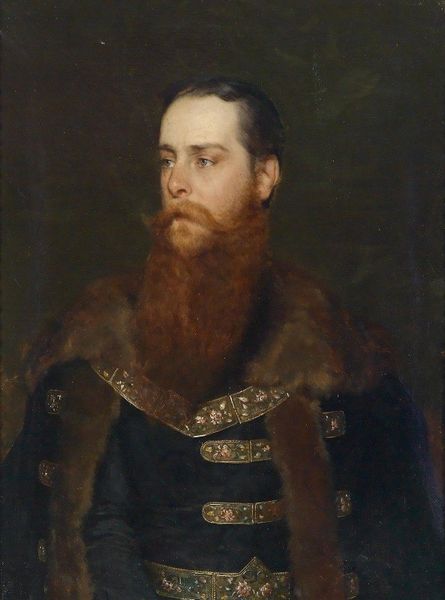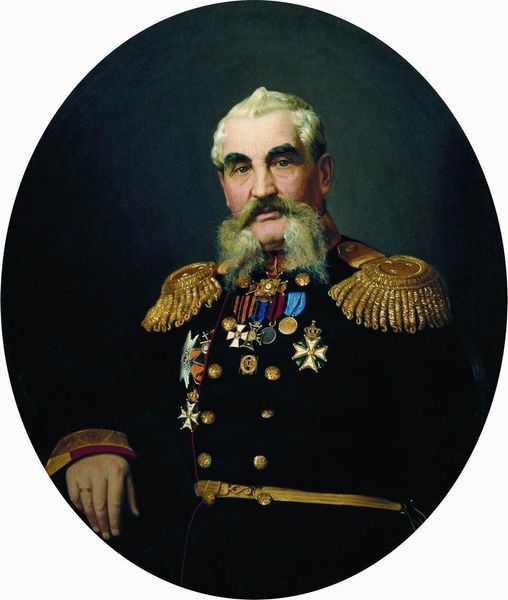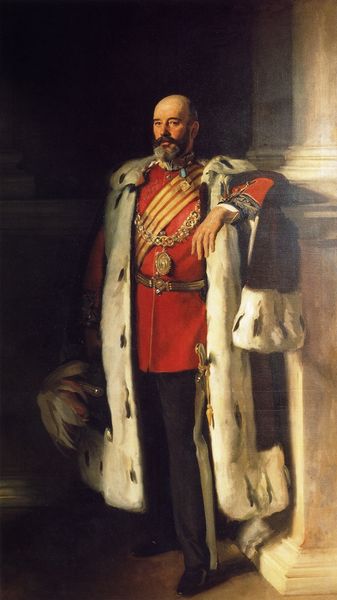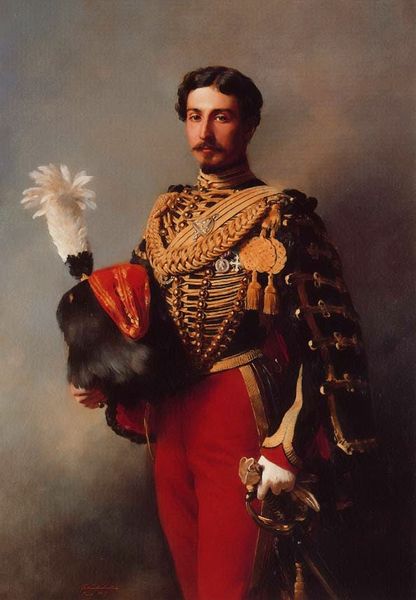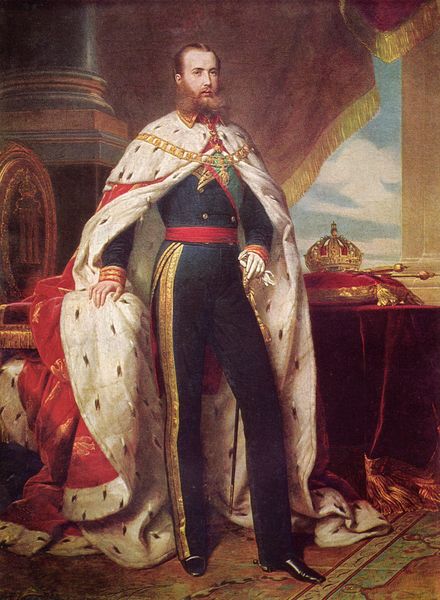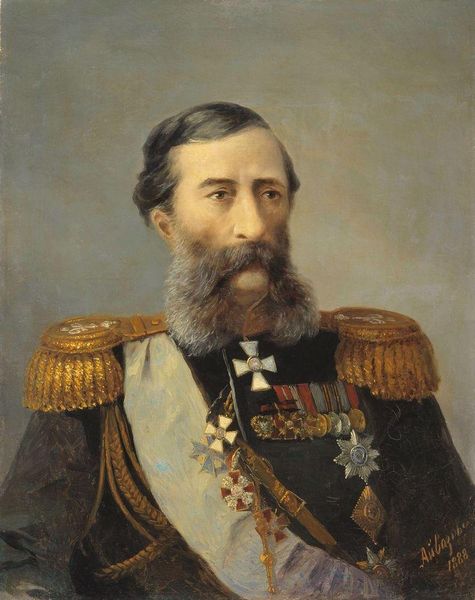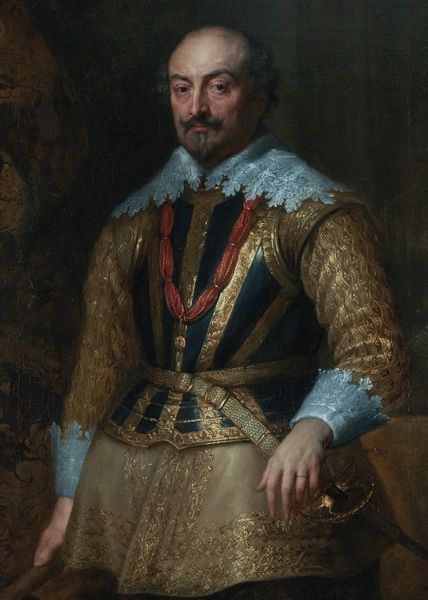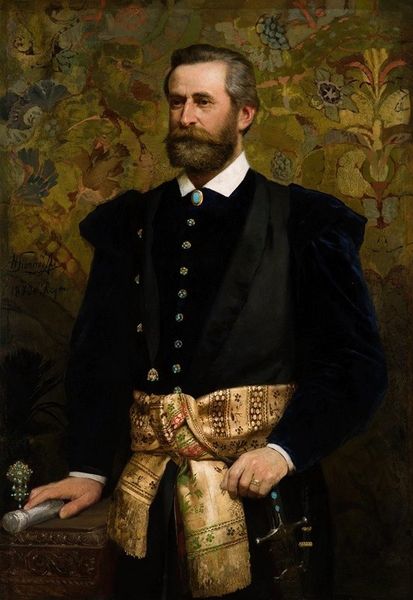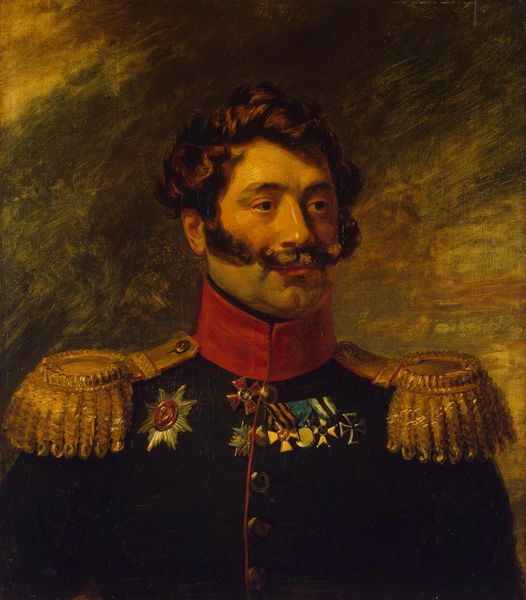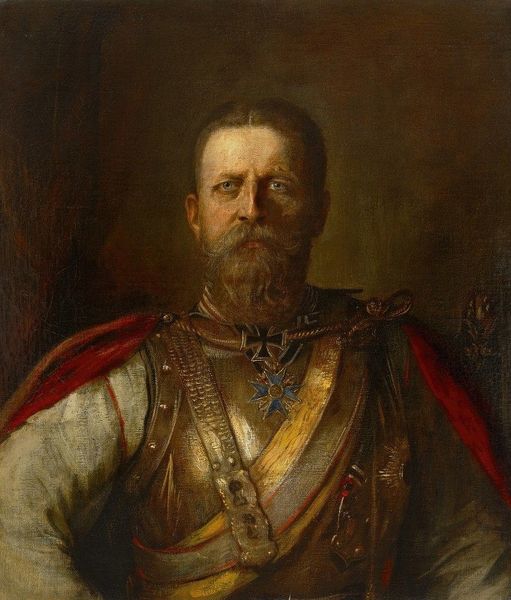
Copyright: Public Domain: Artvee
Gyula Benczúr painted this portrait of Albert Ujházy in Hungary in the late 19th century. It presents a personage of evident wealth, a fine beard, fur-lined cloak, and gold decorations. Looking at the image itself, we can interpret meaning through the visual codes of the time. The opulence suggests Ujházy's high social standing, fitting with the Austro-Hungarian Empire's rigid class structure. But why the traditional Hungarian garments? The context is the rise of Hungarian nationalism in the late 1800s. Artists and intellectuals, often from the upper classes, evoked older, more rural traditions to express a sense of cultural difference from the Empire's Austrian center. To better understand the painting, we can turn to a wide range of resources. Historical archives might reveal details about Ujházy's life and political activities. Art historical literature would contextualize Benczúr's career and the artistic trends of the time. Only through this interdisciplinary approach can we fully grasp the painting's role in shaping national identity.
Comments
No comments
Be the first to comment and join the conversation on the ultimate creative platform.
